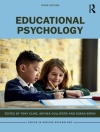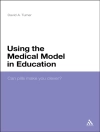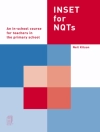The ability to make effective arguments is not only necessary in students’ academic lives, it’s a transferable skill that’s essential to students’ future success as critical thinkers and contributing members of society.
But in the here and now, how do we engage students and ensure they understand argument writing’s fundamental components? How do we take them from ‘Here’s what I think’ to ‘Here’s what I think. Here’s what makes me think that. And here’s why it matters’?
This stunning, full-color book by Michael Smith and Jon-Philip Imbrenda shows the way, with ready-to-implement lessons that make argument writing topical and relevant. Students are first asked to form arguments about subjects that matter to them, and then to reflect on the structure of those arguments, a process that provides learners with valuable, reusable structural models.
- Throughout the book, the authors provide helpful instructional tools, including
- Literary, nonfiction, and author-created simulated texts that inspire different points of view
- Essential questions to create a context that rewards argumentation
- Lessons introducing students to the three essential elements of an argument—claim, data, and warrant—and how to make each effective
- Questioning probes, semantic differential scales, and other innovative instructional approaches
- Samples of writing from the authors’ own students, and enlightening details on how this work informed the authors’ subsequent teaching approach
Complete with guidance on applying the lessons’ techniques in a broader, unit-wide context, Developing Writers of Argument offers a practical approach for instructing students in this crucial aspect of their lifelong development.
विषयसूची
Foreword by Jim Burke
Acknowledgments
PART I. THE ARGUMENT FOR ARGUMENT
Chapter 1. Introduction
Argument Cultivates Critical Thinking
Argument Fosters Collaborative Reasoning
Argument Promotes a Sense of Social Responsibility
What This Book Can Offer
Chapter 2. A Classroom Culture of Argumentation
Revisiting the Three R’s
Conversation as a Metaphor for Learning
Staging Conversations in Your Classroom
So What, Exactly, Is an Argument, Anyway?
Chapter 3. Our Instructional Approach
Transferable Classroom Tools
So Do They Work?
PART II. LESSONS
Chapter 4. Everyday Arguments
Introducing the Elements of Argument
Lesson 1: Apple Music vs. Spotify
Lesson 2: Taco Bell vs. Chipotle
Lesson 3: Who Is the Better Superhero?
Lesson 4: Which Video Streaming Service Is the Best?
Lesson 5: Heinz’s Dilemma
Lesson 6: To What Extent Am I Responsible to Others?
Chapter 5. Practicing Three Elements of Argument
Lesson 7: Crafting Controversial Claims
Lesson 8: What Makes an Effective Claim?
Lesson 9: What Makes Effective Data? Part 1
Lesson 10: What Makes Effective Data? Part 2
Lesson 11: How Do Warrants Relate to Claims and Data?
Lesson 12: Practice Writing Warrants
Chapter 6. Applying What They’ve Learned About Argument to Texts
Lesson 13: Who Is Going to Bounce Back?
Lesson 14: Using Three Key Questions to Understand a Poem
Lesson 15: Applying What We’ve Learned to a Literary Argument
Lesson 16: Learning the Reader’s Rule of Rupture
Lesson 17: Applying Argumentative Strategies to Respond to a Well-Known Theory
Lesson 18: Bringing Together All of the Elements of Argument: The Minnesota Twins Study
Chapter 7. Putting It All Together: Applying Argument to Life Choices
Lesson 19: Should I Choose a 2-Year or 4-Year College?
Lesson 20: What Career Has the Best Potential for Me?
Chapter 8. How to Use This Book
Using the Lessons Directly
Using the Tools
Using Our Lessons as Templates
References
Index
लेखक के बारे में
Jon-Philip Imbrenda, a visiting assistant professor in the Department of Instruction and Learning at the University of Pittsburgh, has taught reading and writing to high school and college students for over 15 years. He is a recipient of the Sigol Award from the International Society for Technology in Education and the Dr. Rita Wolotkiewicz award for outstanding professional achievement in education. His scholarly work has appeared in Written Communication and Research in the Teaching of English.












